
Industrial lighting suppliers play a crucial role in ensuring that work environments are adequately illuminated. These suppliers provide a wide range of lighting solutions tailored to meet the specific needs of various industries, from manufacturing plants to warehouses. The importance of proper lighting cannot be overstated, as it directly impacts both safety and productivity. In environments where heavy machinery is operated or intricate tasks are performed, the right lighting can significantly reduce the likelihood of accidents and errors, ultimately safeguarding both personnel and equipment.
By collaborating with lighting contractors, these suppliers help to design and implement lighting systems that enhance visibility while minimizing hazards. This partnership is essential in creating spaces where employees can perform their tasks efficiently and safely. Additionally, the integration of smart lighting technologies is becoming increasingly prevalent, allowing for adaptive lighting solutions that respond to real-time conditions, further optimizing work environments. With the rise of automation and IoT (Internet of Things), industrial lighting is evolving to not only illuminate spaces but also to contribute to energy management and operational efficiency.
There are several types of lighting solutions available for industrial applications, each designed to address unique challenges. Common types include LED high bays, floodlights, and task lighting. LED high bays are particularly popular due to their energy efficiency and long lifespan, making them ideal for large spaces with high ceilings. These fixtures can also be equipped with dimming capabilities, allowing facilities to adjust light levels based on occupancy or time of day, further enhancing energy savings.
Floodlights, on the other hand, are often used for outdoor applications, providing bright illumination for loading docks, parking lots, and other exterior areas. Their robust design ensures durability against harsh weather conditions, making them a reliable choice for outdoor safety. Task lighting focuses on specific work areas, ensuring that employees have the visibility they need to perform intricate tasks safely. This type of lighting can be customized with features such as adjustable arms or magnetic mounts, allowing workers to direct light precisely where it is needed most, thereby improving both comfort and efficiency.
Safety standards in industrial lighting are established to protect workers and ensure that lighting installations are effective. Compliance with these standards is essential for lighting contractors and suppliers alike. Adhering to regulations such as the Occupational Safety and Health Administration (OSHA) guidelines helps to mitigate risks associated with inadequate lighting. Furthermore, understanding local codes and standards is vital, as these can vary significantly from one region to another, impacting the design and implementation of lighting solutions.
Moreover, suppliers often provide guidance on the best practices for installation and maintenance, ensuring that lighting systems remain compliant throughout their lifespan. This proactive approach not only enhances safety but also fosters a culture of responsibility within the workplace. Regular audits and assessments of lighting systems can help identify potential issues before they escalate, ensuring that the workplace remains a safe environment for all employees. Additionally, training programs offered by suppliers can empower staff to recognize the importance of proper lighting and encourage them to report any deficiencies, further contributing to a safer work atmosphere.
Proper lighting design is fundamental to enhancing safety in industrial environments. A well-designed lighting system can significantly reduce the likelihood of accidents and injuries. Factors such as light intensity, distribution, and color temperature all play a role in creating a safe workspace.
Lighting contractors must assess the specific needs of each environment to determine the most effective design. For instance, areas with high foot traffic may require brighter lighting to improve visibility, while spaces where precision work is performed may benefit from task lighting that minimizes shadows.
Light intensity refers to the brightness of the light emitted from a fixture, while distribution pertains to how that light is spread across a space. Both factors are critical in ensuring that work areas are adequately illuminated. Insufficient light intensity can lead to poor visibility, increasing the risk of accidents.
Conversely, overly intense lighting can cause glare, which may distract workers and lead to mistakes. Therefore, achieving the right balance is essential. Industrial lighting suppliers often provide photometric data to help contractors select fixtures that meet the specific lighting requirements of a space. Additionally, the use of dimmable lighting systems can offer flexibility, allowing workers to adjust the brightness according to their tasks, thus enhancing comfort and safety.
Color temperature, measured in Kelvin (K), affects how colors are perceived in a workspace. Warmer color temperatures (around 3000K) create a cozy atmosphere, while cooler temperatures (5000K and above) mimic daylight and enhance alertness. In industrial settings, cooler color temperatures are often preferred as they promote focus and reduce fatigue.
By selecting the appropriate color temperature, lighting contractors can create environments that not only improve safety but also enhance employee productivity. This consideration is particularly important in areas where precision and attention to detail are paramount. Furthermore, the psychological effects of color temperature should not be overlooked; cooler lighting can invigorate workers, leading to increased morale and efficiency, while warmer lighting can provide a sense of comfort during longer shifts. The strategic implementation of both types can help create a balanced atmosphere that caters to various tasks throughout the workday.
Energy efficiency is a significant consideration in modern industrial lighting solutions. Not only does it contribute to lower operational costs, but it also has safety implications. Energy-efficient lighting systems, such as LED fixtures, generate less heat compared to traditional lighting options, reducing the risk of fire hazards.
Furthermore, energy-efficient systems often come equipped with advanced controls, such as motion sensors and dimming capabilities. These features allow for better management of lighting levels, ensuring that areas are only illuminated when needed. This not only conserves energy but also enhances safety by maintaining optimal lighting conditions during operational hours.
Reliability is a critical factor when selecting industrial lighting solutions. Suppliers that offer high-quality products ensure that lighting systems remain functional over time, reducing the need for frequent replacements. This reliability is essential in maintaining safety standards, as malfunctioning lights can create hazardous conditions.
Regular maintenance is also necessary to ensure that lighting systems operate at peak efficiency. Suppliers often provide maintenance services or guidelines, helping contractors implement schedules that keep lighting systems in optimal condition. This proactive approach minimizes the risk of unexpected failures that could compromise safety.
Beyond providing products, industrial lighting suppliers often offer training and support to contractors. This education can cover various aspects, from installation techniques to understanding lighting design principles. By equipping contractors with the necessary knowledge, suppliers help ensure that installations are performed correctly and safely.
Additionally, ongoing support can assist contractors in troubleshooting issues that may arise post-installation. This collaborative relationship fosters a safer working environment, as contractors are better prepared to address any lighting-related challenges that could impact safety.
The landscape of industrial lighting is continuously evolving, driven by advancements in technology and an increasing focus on safety. Innovations such as smart lighting systems and IoT (Internet of Things) integration are transforming how lighting is managed in industrial settings.
Smart lighting systems can automatically adjust based on occupancy, time of day, or ambient light levels. This adaptability not only enhances energy efficiency but also ensures that workspaces are consistently illuminated to meet safety requirements. As these technologies become more prevalent, the role of industrial lighting suppliers will be even more critical in guiding contractors through the implementation process.
Integrating smart technologies into industrial lighting systems offers numerous benefits. For instance, real-time monitoring can alert facility managers to potential issues, such as malfunctioning fixtures or areas that require additional lighting. This proactive approach enhances safety by allowing for immediate corrective actions.
Moreover, data collected from smart lighting systems can provide valuable insights into usage patterns and lighting effectiveness. This information can inform future lighting designs, ensuring that installations are optimized for safety and efficiency.
As industries increasingly prioritize sustainability, the demand for eco-friendly lighting solutions is on the rise. Suppliers that focus on sustainable products not only contribute to environmental conservation but also enhance safety by providing low-heat, energy-efficient lighting options.
Furthermore, sustainable practices often align with safety standards, as they promote the use of non-toxic materials and reduce waste. By choosing suppliers that prioritize sustainability, contractors can contribute to a safer and more responsible industrial environment.
In summary, industrial lighting suppliers are essential partners in enhancing safety within lighting installations. Their expertise in providing tailored solutions, ensuring compliance with safety standards, and offering ongoing support is invaluable to lighting contractors. By prioritizing proper lighting design, energy efficiency, and the integration of smart technologies, suppliers contribute significantly to creating safer work environments.
As industries continue to evolve, the collaboration between suppliers and contractors will be crucial in addressing the challenges of modern lighting installations. Together, they can enhance safety, boost productivity, and create workspaces that are not only functional but also conducive to employee well-being.
Ready to enhance the safety and productivity of your workspaces with superior lighting solutions? Look no further than LumenWholesale. Our commitment to providing spec-grade lighting products at wholesale prices ensures that you don’t have to compromise on quality or cost. With LumenWholesale, you gain access to an extensive selection of lighting that meets the highest industry standards, all while enjoying the convenience of free shipping on bulk orders. Elevate your lighting installations today and experience the unbeatable value and service that only LumenWholesale can offer. Wholesale Lighting at the Best Value is just a click away.
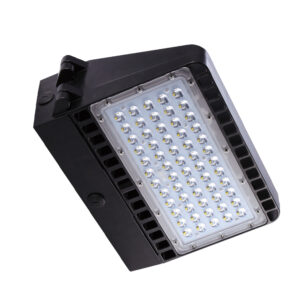
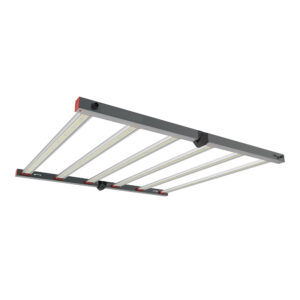
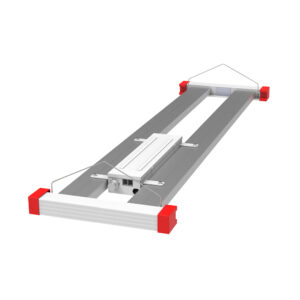
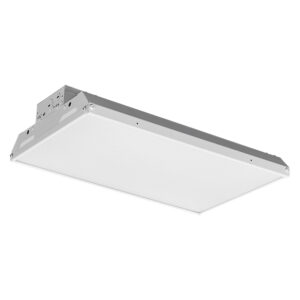
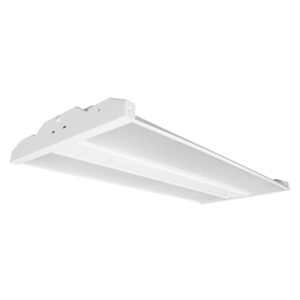
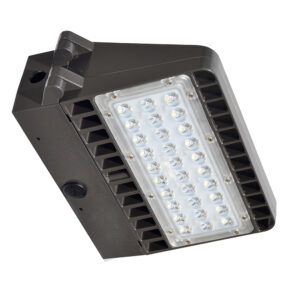

Discover why purchasing emergency exit lights in bulk from local distributors might not be the best choice.

Discover why purchasing fluorescent light bulbs in bulk from local distributors might not be the best choice.

Discover the transformative journey of high bay lights in the lighting industry.

Discover essential insights into controls and electrical supplies tailored for lighting contractors.
Get notified when NEW deals are released.
Optimize your budget with wholesale discounts.
Only top-quality, specification-grade lighting products.
No additional costs at checkout - what you see is what you pay.
We understand the unique needs of contractors.